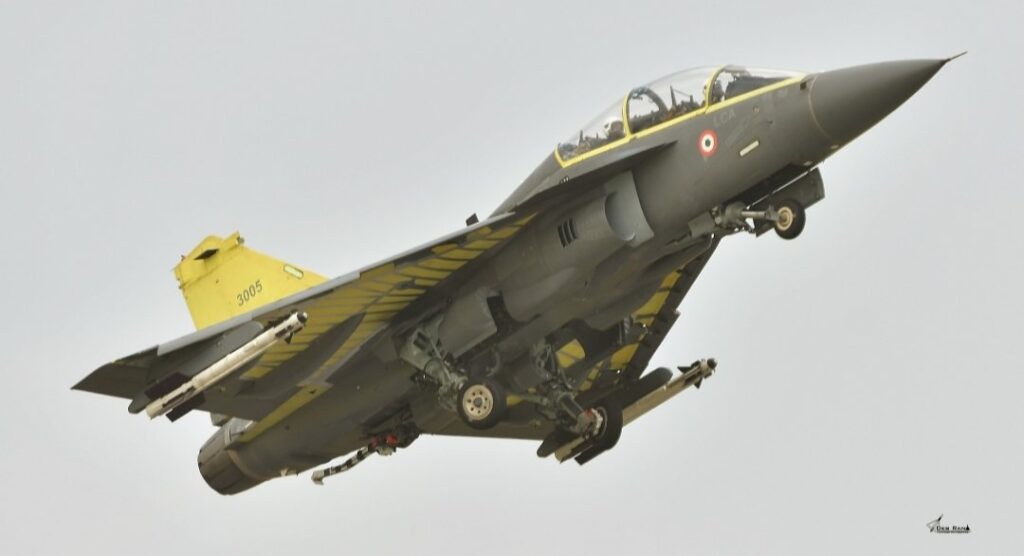Bridging the Naval Aviation Gap: The Case for Interim NLCA for Indian Navy
The Indian Navy’s carrier aviation capabilities are undergoing a transformative phase with several significant developments on the horizon. As the nation strives for self-sufficiency in defense technology, the discussion around adopting interim solutions to bridge the gap between existing assets and forthcoming advancements gains prominence. In this context, the Naval Light Combat Aircraft (NLCA) emerges as a viable option, poised to provide a much-needed interim solution for the Indian Navy’s carrier operations.

NLCA NP5’s Maiden Flight:
Recent reports have confirmed that the fifth prototype of the NLCA, NP5, has successfully completed its maiden flight. This achievement marks a pivotal step in the development of the NLCA program, underscoring India’s progress towards achieving indigenous carrier-based aircraft technology. The NLCA program, aimed at delivering an advanced carrier-compatible fighter, has the potential to address the Indian Navy’s operational needs in the medium term.
Current Naval Aviation Fleet:
The Indian Navy currently operates the MiG-29K from INS Vikramaditya, while plans are in place to introduce the Rafale aircraft for the Indigenous Aircraft Carrier 1 (IAC 1), INS Vikrant. This combination demonstrates the navy’s commitment to enhancing its operational capabilities and modernizing its carrier aviation fleet. However, the timeline for the full induction of the Twin Engine Deck Based Fighter (TEDBF) is projected around 2032, creating a transitional period that calls for pragmatic solutions.
NLCA as an Interim Solution:
The proposition to acquire a few NLCA Lead-In Trainer variants for the Indian Navy gains merit when considered in the context of the existing fleet composition. While the Rafale and TEDBF projects hold significant promise, the immediate availability of an indigenous, carrier-compatible aircraft can provide operational continuity and training infrastructure. The NLCA, developed as an interim solution, can help train pilots and ground crew for carrier operations, ensuring a seamless transition to more advanced platforms.
The TEDBF Prospect:
The Twin Engine Deck Based Fighter (TEDBF) program has generated considerable excitement within the Indian Navy. Designed to replace the aging MiG-29K and further enhance carrier aviation capabilities, the TEDBF promises advanced technology and enhanced operational capabilities. However, given the complexities of aircraft development, testing, and certification, the TEDBF’s anticipated availability around 2032 necessitates a prudent approach to bridge the operational gap.
Leveraging HAL’s Capacity:
One significant advantage in the NLCA equation is the production capacity of Hindustan Aeronautics Limited (HAL). Leveraging HAL’s experience and infrastructure can expedite the production of NLCA units, ensuring a timely response to the navy’s immediate requirements. This strategic approach aligns with the nation’s “Make in India” initiative, promoting indigenous manufacturing capabilities and self-reliance in defense technology.